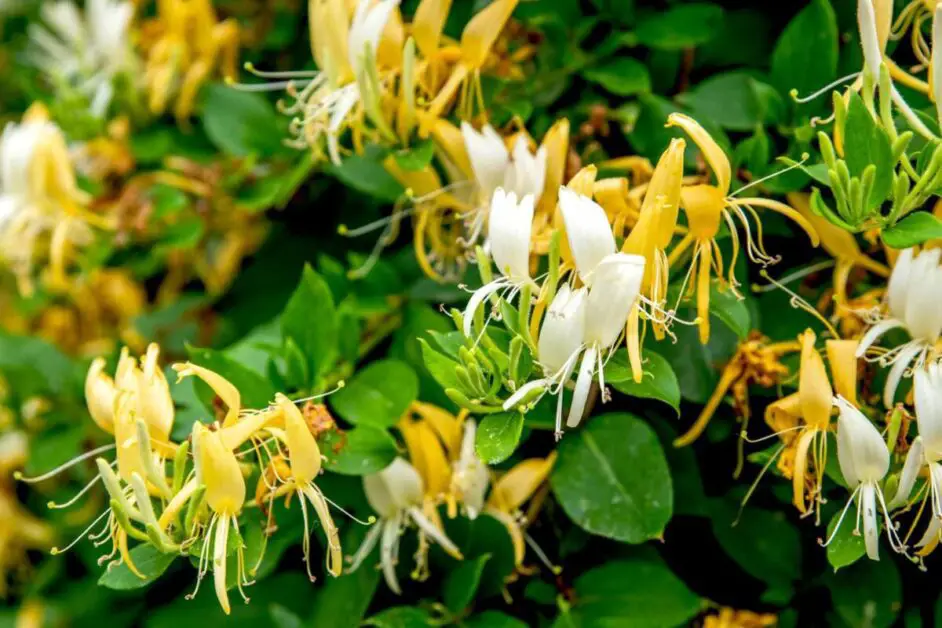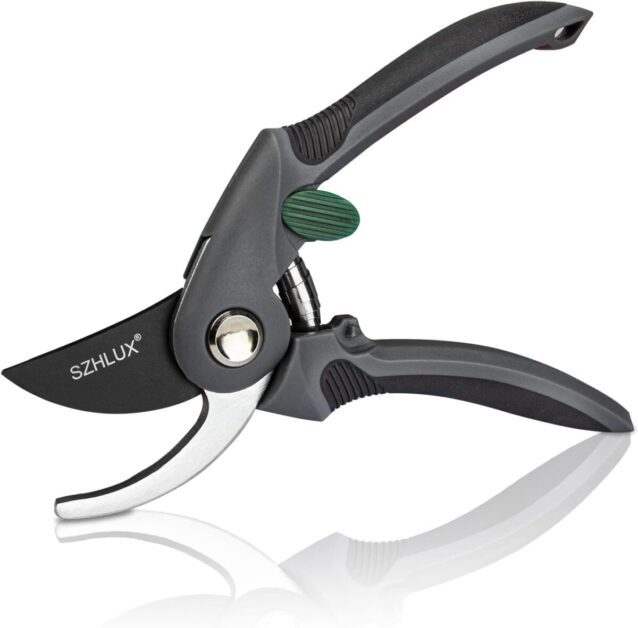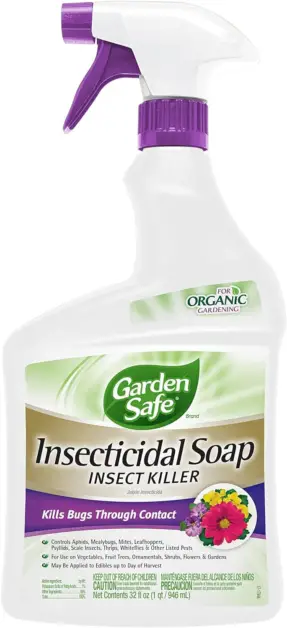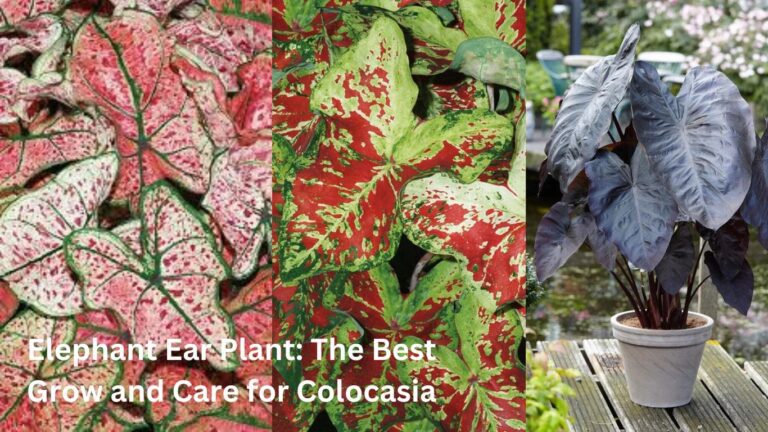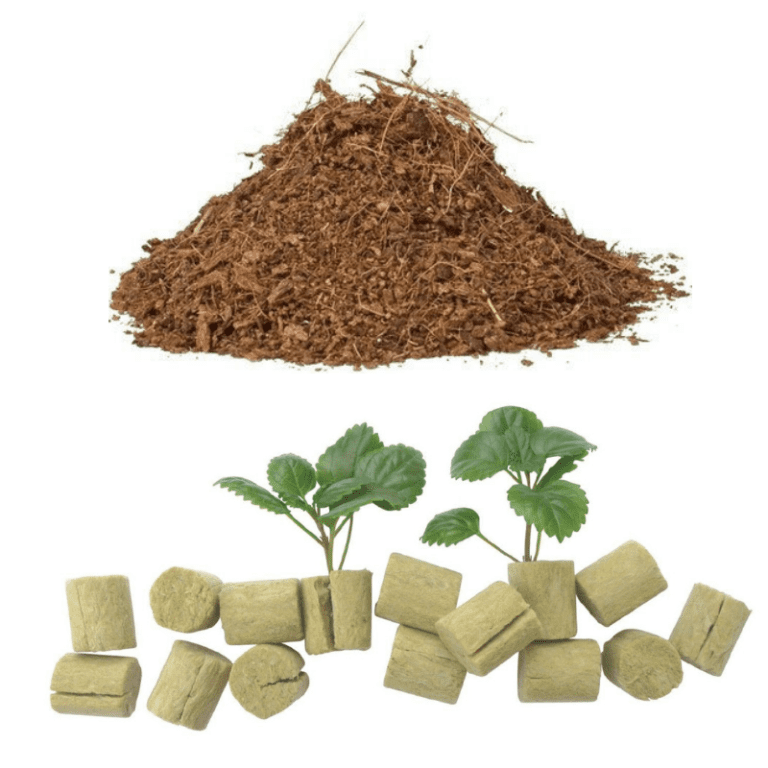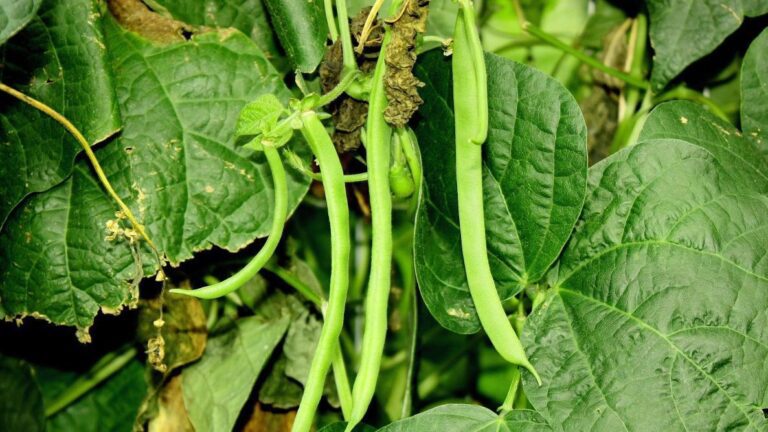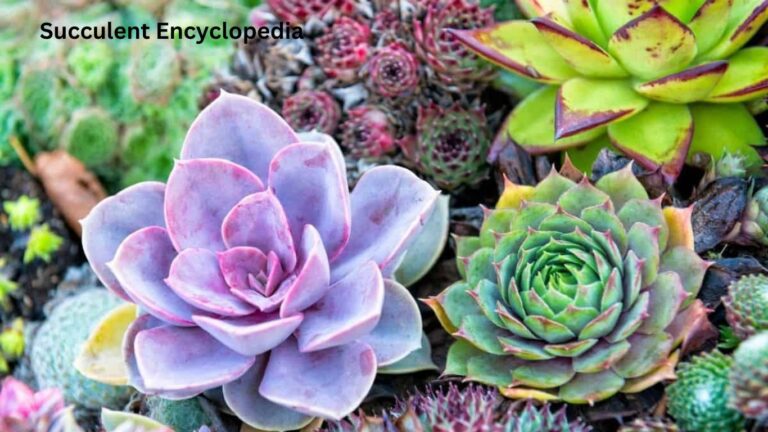Japanese Honeysuckle: A Vigorous Flowering Vine
Are you looking to add a touch of elegance and fragrance to your garden? Look no further than the enchanting Japanese Honeysuckle! This delightful vine, known for its sweet aroma and delicate flowers, is not just a treat for the senses but also a powerhouse of health benefits. From attracting pollinators to providing traditional medicinal uses, this versatile plant is a must-have for any nature lover.
Join us as we explore the wonders of Japanese Honeysuckle and discover how you can incorporate this beauty into your outdoor space. Embrace nature’s gift and let Japanese Honeysuckle bloom in your garden today!
Table of Contents
Benefits of Growing Japanese Honeysuckle
Japanese honeysuckle (Lonicera japonica) is a versatile and beautiful vine that offers a plethora of benefits to gardeners. Its fragrant flowers not only attract pollinators like bees and butterflies but also add aesthetic appeal to any landscape.
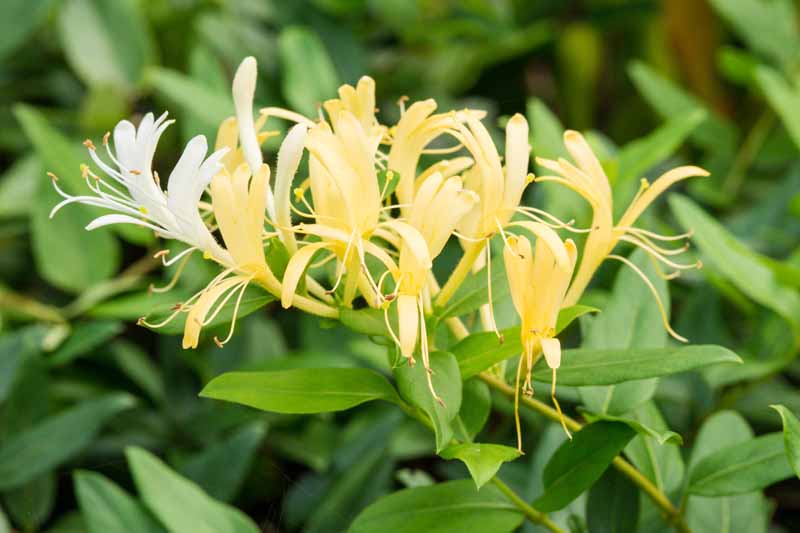
Characteristics of Japanese Honeysuckle
Japanese Honeysuckle, scientifically known as Lonicera japonica, is a versatile and attractive vining plant that is popular among gardeners for its fragrant flowers and vigorous growth habit.

- Leaf and Flower Description:
- Leaves: Oval-shaped, dark green leaves.
- Flowers: Tubular-shaped, white or yellow flowers with a sweet fragrance.
- Pollinator Attraction: Attracts bees and butterflies due to its nectar-rich blooms.
- Hardiness and Climate Tolerance:
- Hardy Plant: Japanese Honeysuckle is resilient and can thrive in various climates.
- Adaptability: It adapts well to different regions, making it desirable for gardens worldwide.
- Rapid Growth and Coverage:
- Quick Growth Rate: Japanese Honeysuckle grows rapidly.
- Covering Structures: It can cover fences, arbors, and trellises, creating a lush green backdrop.
- Visual Appeal: The beautiful blooms enhance the aesthetic of outdoor spaces.
- Soil and Light Requirements:
- Soil Types: Tolerates various soil types.
- Light Conditions: Thrives best in full sun to partial shade.
- Low Maintenance:
- Resilient Nature: Japanese Honeysuckle is low-maintenance and suitable for gardeners of all experience levels.
Incorporating Japanese Honeysuckle into your garden can add both beauty and practical benefits. Its fragrant flowers and adaptability make it a delightful choice! 🌿🌸
Best Soil Conditions for Japanese Honeysuckle
The Japanese Honeysuckle is a popular climbing vine that is known for its fragrant and attractive flowers.
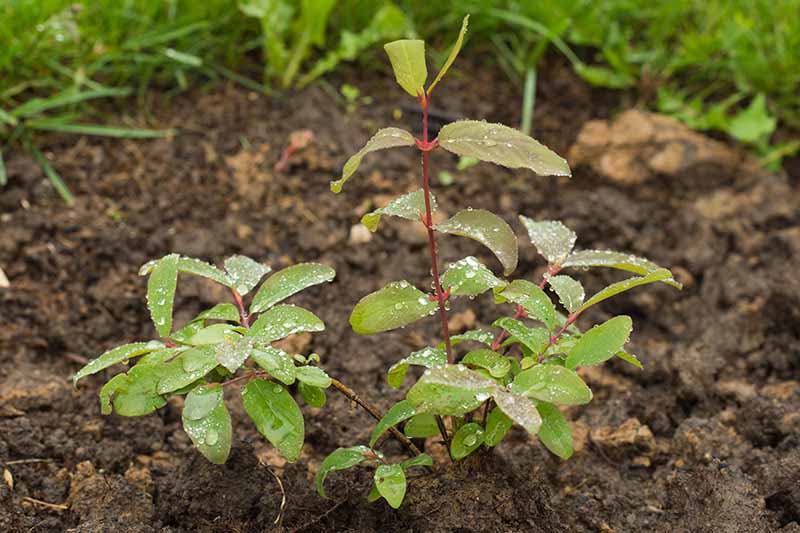
- It is a hardy plant that can grow in a variety of soil types, but it prefers well-draining soil that is rich in organic matter.
- In addition to soil quality, Japanese honeysuckle also benefits from a soil depth of at least 12 inches to allow its root system to establish and spread effectively.
- Incorporating organic mulch around the base of the plant can help retain moisture and provide essential nutrients as it decomposes over time.
The following table explains soil conditions for japanese honeysuckle:
| Soil Parameter | Treatment | Effect | Optimal Range |
|---|---|---|---|
| 1. pH Level | – Adjust pH if necessary with lime or sulfur. | – Influences nutrient availability and plant health. | 6.0 – 7.5 |
| 2. Soil Texture | – Amend heavy clay soils with organic matter. | – Affects drainage and root development. | Loamy |
| 3. Drainage | – Improve drainage by adding sand or perlite. | – Prevents waterlogging and root rot. | Well-drained |
| 4. Organic Matter | – Incorporate compost or aged manure into soil. | – Enhances soil structure and fertility. | 2 – 5% |
| 5. Nutrient Levels | – Supplement with balanced fertilizer if deficient. | – Supports vigorous growth and flowering. | N: 50-100 ppm P: 25-50 ppm K: 50-100 ppm |
Here is a suggested soil mix for Japanese Honeysuckle:
A suggested soil mix for Japanese Honeysuckle could be a 1:1:1 ratio of loam, compost, and perlite. This will provide a well-draining, nutrient-rich soil that will help the plant to thrive.
Ideal Sunlight Exposure for Japanese Honeysuckle
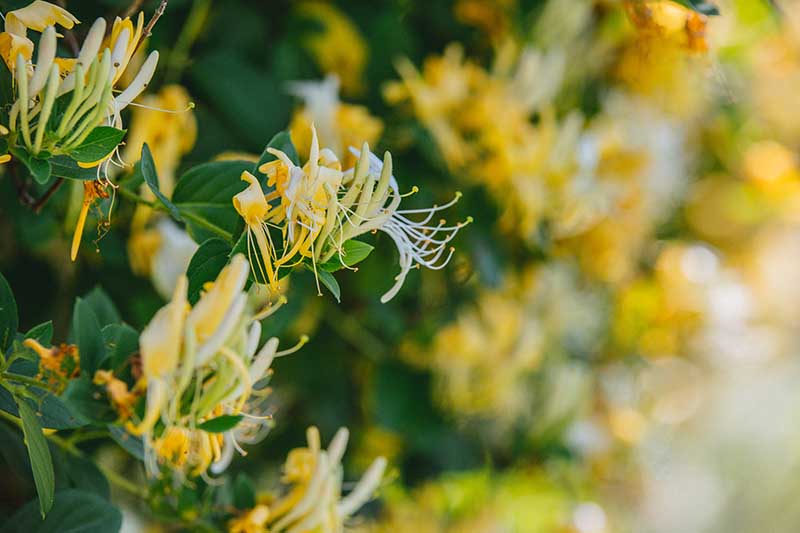
Japanese honeysuckle thrives in locations where it receives ample sunlight.
- Sunlight Needs:
- Full to Partial Sun: Japanese honeysuckle thrives when exposed to ample sunlight.
- Minimum 6 Hours: Ideally, it should receive at least 6 hours of direct sunlight per day.
- Optimal Growth and Blooming:
- Sufficient sunlight is crucial for the plant’s overall health, growth, and flowering.
- Inadequate sun exposure may result in stunted growth and fewer blooms.
- Consider Location Carefully:
- When choosing a spot for Japanese honeysuckle, prioritize areas with good sun exposure.
- Ensure that the selected location receives the necessary light for the plant to flourish.
Remember that proper sun exposure plays a vital role in the success of your Japanese honeysuckle. With adequate sunlight, you’ll enjoy a vibrant and thriving addition to your garden! 🌿🌸
Watering Needs of Japanese Honeysuckle

To ensure the healthy growth and blooming of Japanese honeysuckle, it is crucial to understand and cater to its specific watering needs.
Here’s a quantitative table outlining the watering needs of Japanese honeysuckle (Lonicera japonica) at different stages of its lifecycle:
| Lifecycle Stage | Watering Frequency | Notes |
|---|---|---|
| Planting and Establishment | Regularly | Keep the soil consistently moist during the initial growth phase. Water deeply to encourage root development. |
| Growth and Flowering | Moderate | Once established, water the plant when the top 1-2 inches of soil feel dry. Avoid overwatering to prevent root rot. |
| Hot Summer Months | Frequent | During hot weather, increase watering frequency. Provide deep watering to prevent wilting. |
| Fall and Winter | Reduced | Japanese honeysuckle is more drought-tolerant during cooler months. Water sparingly but ensure the soil doesn’t completely dry out. |
Remember to adjust watering based on local climate conditions, soil type, and rainfall. Observing the plant’s leaves and soil moisture will help you fine-tune the watering schedule. 🌿💧
Pruning Techniques for Japanese Honeysuckle
To ensure optimal growth and flowering of your Japanese honeysuckle, mastering the art of pruning is essential. Pruning techniques for Japanese honeysuckle involve regular maintenance to promote vigorous growth and prevent overgrowth.

Here are some techniques for pruning Japanese Honeysuckle:
Vines: Light pruning can be done throughout the year. However, major pruning should wait until fall or winter when the vine is dormant.
Shrubs: Prune honeysuckle bushes in spring after the flowers drop off.
Start by removing the three D’s: dead, damaged, and diseased stems. These are essential for overall plant health.
Trim stems that are growing in the wrong direction or rubbing against each other.
Cut a stem back to where it joins another stem or shorten it just beyond a leaf node.
Once you’ve addressed the above issues, shape the plant:
Remove stray stems that wander away from the support.
Thin out the top to allow sunlight and air circulation, preventing diseases like powdery mildew.
If your honeysuckle vine is overgrown and tangled, cut it back severely to about a foot (31 cm.) from the ground during winter dormancy.
Keep the soil moist to help the vine regenerate.
For overgrown honeysuckle bushes, gradually rejuvenate them by removing one-third of the branches each year for three years.
This prevents leaving a hole in your landscape while revitalizing the plant.
Proper timing is crucial when pruning Japanese honeysuckle. Aim to prune your plant in late winter or early spring before new growth begins, as this allows the plant to allocate its energy towards producing new shoots and flowers. Avoid heavy pruning during the flowering season to prevent disrupting the blooming cycle. By incorporating these pruning techniques into your gardening routine, you can enhance the beauty and longevity of your Japanese honeysuckle plant.
Here is a comparison of my two favorite shears that I have been using in my garden for a long time. Both are good in their own ways. I highly recommend these two shears for use in your garden for the perfect prune.
✔ Rust-resistant material for long-lasting durability.
✔ High-quality compression spring reduces hand fatigue during use.
✔ Safety lock design for convenient one-handed operation.
✔ Suitable for trimming and cutting various plants, including rose bushes, shrubs, and hedges.
✔ Comfortable, non-slip grip for ease of use.
✔ Versatile for use in both gardening and landscaping tasks.
❌ Some users may find the price relatively high compared to other options.
❌ Requires proper maintenance, including wiping the blade and storing it in a dry place after use.
❌ May not be suitable for individuals with small hands due to the ergonomic design.
❌ Limited information available on warranty or guarantee policies.
✔ Comfortable Design: The shears feature a soft grip handle, making them comfortable to use for extended periods without causing hand fatigue.
✔ Versatility: Suitable for various pruning tasks, including cutting flower stems, maintaining herb gardens, and trimming plants, making them a versatile tool for gardeners.
✔ Clean Cuts: The bypass blade design provides clean cuts on stems and small branches up to 5/8 inch thick, promoting overall plant health.
✔ Non-Stick Coating: Equipped with a low-friction coating, the blades glide smoothly through wood, preventing gumming up with sap and debris, and resisting rust.
✔ Easy to Use: Designed for ease of use, these shears are ideal for both experienced gardeners and beginners alike.
❌ Limited Cut Capacity: The shears have a maximum cut capacity of 5/8 inch diameter, which may not be sufficient for larger pruning tasks.
❌ Size: Some users may find the dimensions of the shears (9.07″L x 2.47″W) slightly bulky, especially for precise trimming in tight spaces.
❌ Lock Mechanism: A few users have reported issues with the locking mechanism, stating that it may not always securely hold the blades closed when not in use.
❌ Maintenance: While the non-stick coating helps prevent rust and debris buildup, regular cleaning and maintenance may still be required to ensure optimal performance and longevity.
Propagating Japanese Honeysuckle
Japanese honeysuckle can be easily propagated through both seeds and stem cuttings, allowing gardeners to expand their plant collection with minimal effort.It is essential to maintain a consistent level of moisture while the seeds germinate and establish.
| Propagation Method | Description |
|---|---|
| Seeds | – Collect ripe seeds from existing plants. |
| – Sow seeds in well-draining soil in spring or fall. | |
| – Keep soil consistently moist until germination occurs. | |
| Softwood Cuttings | – Take 4-6 inch cuttings from new growth in early summer. |
| – Remove lower leaves and dip cut end in rooting hormone. | |
| – Plant cuttings in a mix of perlite and peat moss. | |
| – Maintain high humidity and provide indirect light. | |
| Layering | – Bend a low-growing stem to the ground and bury a section in soil. |
| – Keep the buried section moist and wait for roots to develop. | |
| – Once rooted, sever the new plant from the parent. | |
| Division | – Dig up an established plant and divide it into sections. |
| – Each section should have roots and shoots. | |
| – Replant divisions in desired locations. |
Remember to choose the propagation method that suits your preferences and gardening conditions. Japanese Honeysuckle is resilient and adaptable, making it a delightful addition to any garden! 🌿🌸
Common Pests and Diseases of Japanese Honeysuckle
Japanese honeysuckle is generally resistant to most pests and diseases, making it a low-maintenance plant for gardeners. However, it can sometimes fall victim to a few common issues that may hinder its growth and overall health. Here is a table summarizing some common pests and diseases of Japanese Honeysuckle (Lonicera japonica), their symptoms, and potential treatments:
| Disease/Pest | Symptoms | Treatment |
|---|---|---|
| Root Rot | Blackened and softened roots | Remove the damaged plant parts, cut off the diseased roots and leaves, and then repot your plant in a new container with sterile potting soil. |
| Gray Mold Spots | Brown or gray spots on the plant | Remove the damaged plant parts, cut off the diseased roots and leaves, and then repot your plant in a new container with sterile potting soil. |
| Leaf Spots | Leaves suddenly change color or wilt/droop. | Remove the damaged plant parts, cut off the diseased roots and leaves, and then repot your plant in a new container with sterile potting soil. |
| Yellowing Leaves | Yellow patches between leaf veins on elder leaves, yellowing between leaf veins on young leaves, yellowing of newest leaves, yellowing of leaf edges, widespread yellowing. | If it’s overwatering, simply reduce your watering frequency. If it’s a nutrient deficiency, adjust your fertilization regimen accordingly. |
| Aphids | Misshaped, curled, or yellow honeysuckle leaves, sticky substance on the honeysuckle stem, honeysuckle that are growing deformed, galls on the roots or leaves, small bugs on the opposite part of the leaf, large amounts of small bugs on the stem of the plant, small bugs on the root of the plant. | Manually remove aphids if there are less than a dozen. Use a dry paper towel, pick the aphids off the individual honeysuckle leaves, and gently crush them. Dispose of the dead aphids in a garbage bag. If there are more than a dozen aphids, use a wet paper towel to gently brush the aphids off the honeysuckle leaves and into a garbage can. |
| Powdery Mildew | White, powdery spots on foliage, generally the upper side of leave. | Neem oil, a natural pesticide derived from the fruits and seeds of the neem tree (Azadirachta indica), is effective. |
Regularly inspecting the leaves for any signs of pests or diseases and promptly treating any infestations with organic solutions can help keep your Japanese honeysuckle healthy and vibrant. By practicing proper care and staying vigilant, you can ensure that your Japanese honeysuckle thrives in your garden for years to come.
I’ve been using the Garden Safe Insecticidal Soap for my garden and flowers, and I must say, it’s been a game-changer. This product is an effective, environmentally friendly solution to control harmful insects and bugs. It’s been a relief to find a product that does the job without resorting to dangerous chemicals.The application is straightforward and easy. However, one thing to note is that the sprayer could use some improvement. Despite this minor issue, the overall performance of the product is commendable.
One of the things I appreciate most about this product is its odor. Unlike other insecticides, this soap doesn’t have a harsh, overpowering smell. This makes the process of tending to my garden much more enjoyable.In terms of effectiveness, it works like magic.
In conclusion, I highly recommend the Garden Safe Insecticidal Soap to any gardener looking for an effective, eco-friendly solution to pest problems. It’s a small price to pay for the peace of mind and the vibrant, healthy garden it helps to maintain.
- Effective pest control: Garden Safe Insecticidal Soap kills a variety of pests, including aphids, mealybugs, mites, leafhoppers, scale insects, thrips, and whiteflies, through contact.
- Organic gardening solution: This product is suitable for organic gardening, making it a preferred choice for environmentally conscious gardeners.
- Versatile application: It can be used indoors, outdoors, and in greenhouses, providing flexibility in pest management across different environments.
- Ready-to-use spray: The convenient ready-to-use formulation allows for easy application without the need for additional mixing or preparation.
- Safe for use on edibles: It can be used on vegetables, fruit trees, and other edible plants right up to the day of harvest, ensuring safe consumption.
- Customer satisfaction: Positive customer reviews indicate satisfaction with the product’s quality, ease of use, and effectiveness in controlling pests.
- Daily application may be required: Some users report the need for daily application to maintain effectiveness, which could be considered inconvenient for long-term pest management.
- Mixed results: While many customers are satisfied with the product’s performance, there are also reports of mixed results, with some users experiencing only a partial reduction in pest populations.
- Mold and fungus growth: There are isolated reports of the product causing mold and fungus growth, which could be a concern for some users, especially if it affects plant health.
- Limited comfort rating relevance: Some customers find the comfort rating irrelevant to a pest control product, indicating a potential disconnect in the review system’s evaluation criteria.
- Value for money concerns: A few customers express mixed opinions on the product’s value, suggesting that some may find it relatively expensive compared to other options.
Companion Plants for Japanese Honeysuckle
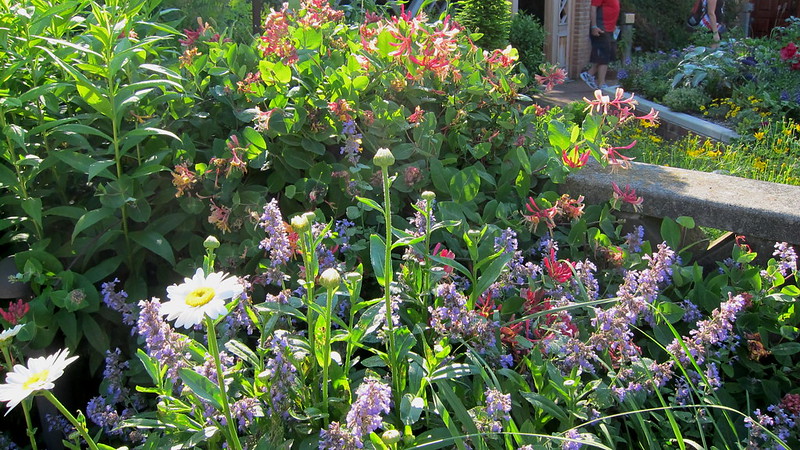
Morning glory
Nasturtium
Marigold
Complementing Japanese Honeysuckle with these carefully selected companion plants can result in a stunning and flourishing garden space.
Creative Uses for Japanese Honeysuckle in Landscaping
Japanese honeysuckle (Lonicera japonica) is a versatile vine that can add beauty and functionality to your landscaping.
- Climbing Trellises and Arbors:
- Training the Vine: Encourage Japanese honeysuckle to climb up trellises, arbors, or pergolas.
- Charming Focal Point: As it grows, the lush foliage and fragrant flowers will create a captivating focal point in your garden.
- Wildlife Attraction: The sweet scent of the flowers will attract beneficial wildlife, such as butterflies and hummingbirds.
- Ground Cover Option:
- Fast-Growing and Spreading: Plant Japanese honeysuckle as ground cover.
- Fill Empty Spaces: Its vigorous growth quickly fill in bare areas, creating a dense carpet of greenery.
- Weed Suppression: The thick foliage helps suppress weeds, reducing maintenance efforts.
- Soil Moisture Retention: The ground cover also helps retain moisture in the soil, promoting overall garden health.
- Aesthetic Enhancement:
- Texture and Color: Whether climbing or covering the ground, Japanese honeysuckle adds texture and color to your landscape.
- Symbolism: Consider its symbolism—the fleeting beauty of its blossoms—as you appreciate its presence.
- Adaptability: Japanese honeysuckle adapts well to various conditions, making it a versatile choice for different garden styles.
Remember to provide proper support for climbing vines and monitor its growth to prevent it from becoming invasive. Enjoy the beauty and cultural significance of Japanese honeysuckle in your outdoor environment! 🌿🌸
Seasonal Care Tips for Japanese Honeysuckle
During the spring season, it is essential to provide Japanese honeysuckle with a balanced fertilizer to support healthy growth and flower production. As the weather warms up, regular watering is crucial to ensure the plant’s hydration needs are met. Keep an eye out for any signs of pests or diseases and address them promptly to prevent potential damage to the plant.
The following table explains seasonal care tips for japanese honeysuckle:
| Season | Treatment | Effect |
|---|---|---|
| Spring | Prune dead or damaged branches. | Stimulates new growth. |
| Apply balanced fertilizer (NPK 10-10-10). | Enhances overall plant health. | |
| Summer | Provide regular watering (1-2 inches/week). | Prevents dehydration and wilting. |
| Mulch around base to retain moisture. | Maintains soil moisture levels. | |
| Fall | Reduce watering frequency. | Prepares plant for dormancy. |
| Apply phosphorus-rich fertilizer. | Promotes root development. | |
| Winter | Insulate base with mulch or straw. | Protects roots from frost damage. |
| Prune lightly to shape and remove deadwood. | Maintains plant structure and health. |
Note: These quantitative tips provide specific treatments and their effects for each season, aiding in the optimal care of Japanese honeysuckle throughout the year.
Harvesting and Using Japanese Honeysuckle Flowers
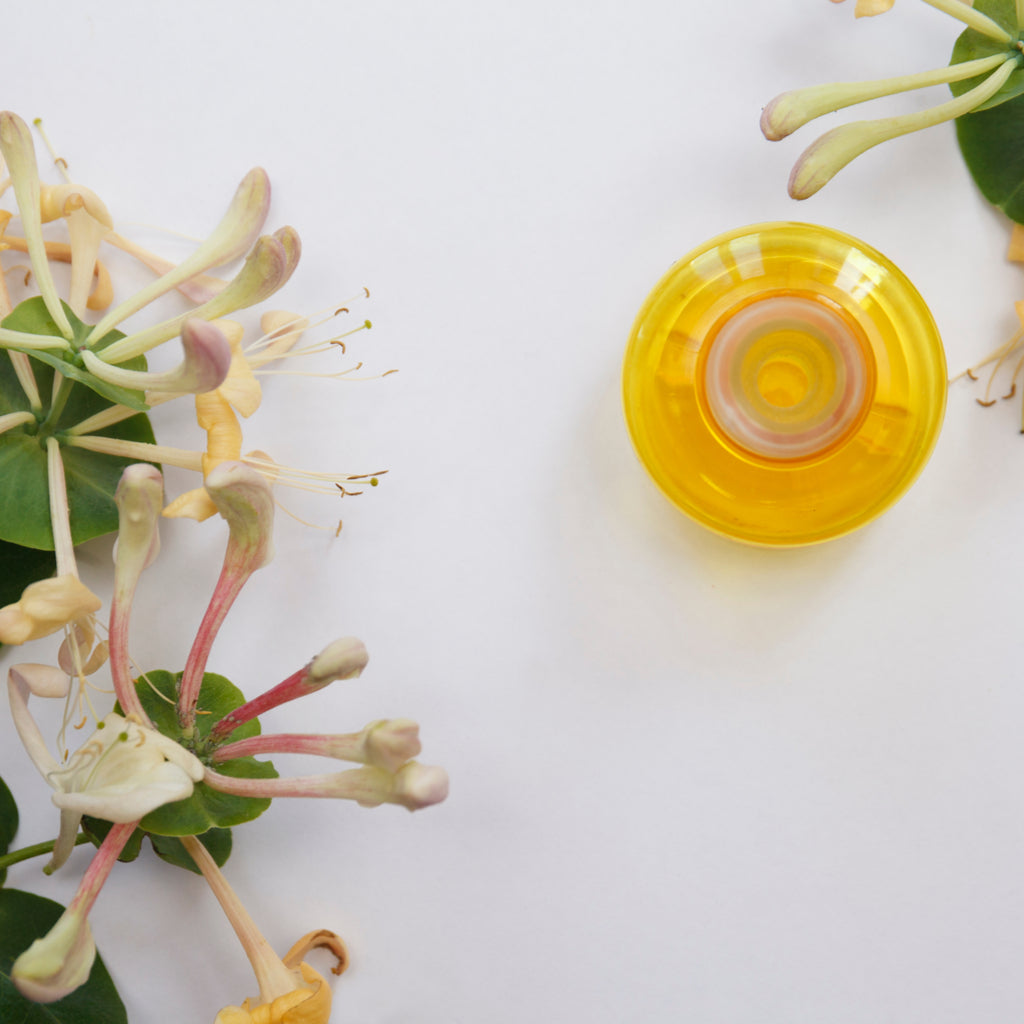
Harvesting and using Japanese honeysuckle flowers can be a rewarding experience for gardeners looking to enjoy the fragrant blooms of this versatile plant.
Historical Significance of Japanese Honeysuckle
Here are the key points about the historical and cultural significance of Japanese Honeysuckle (Lonicera japonica):
- Medicinal Properties and Traditional Asian Medicine:
- Japanese Honeysuckle has been cultivated for centuries due to its medicinal benefits.
- In Chinese medicine, it is valued for its anti-inflammatory and detoxifying properties.
- Ancient Japanese texts mention its use in treating various ailments, emphasizing its historical healing role.
- Symbolism in Cultural Ceremonies and Traditions:
- Japanese honeysuckle holds deep cultural meaning in East Asia.
- It symbolizes purity, love, and the transient nature of life.
- Its delicate flowers serve as a reminder of beauty’s fleeting existence.
- Association with Impermanence:
- In Japan, the vine is often linked to the concept of impermanence (known as “mono no aware”).
- The blossoms bloom briefly and then fade away, mirroring life’s ephemerality.
- This symbolism resonates in Japanese art, literature, and ceremonies.
- Interwoven with Cultural Fabric:
- Beyond its botanical properties, Japanese Honeysuckle is woven into the cultural fabric of the regions where it thrives.
- It represents resilience, adaptability, and the interconnectedness of all living things.
In summary, Japanese Honeysuckle transcends mere botanical significance, embodying centuries of healing practices and cultural expressions across Asia.
Cultural Symbolism of Japanese Honeysuckle

Here are the key points about the cultural significance of Japanese Honeysuckle:
- Symbol of Devoted Affection and Fidelity:
- In Japan, Japanese Honeysuckle is revered as a symbol of unwavering love and loyalty.
- It represents the deep emotional bonds between individuals, emphasizing devotion and faithfulness.
- Binding Love and Everlasting Union:
- Folklore associates the honeysuckle flower with the idea of binding love.
- It symbolizes the eternal union of two souls, transcending time and adversity.
- Sweet Fragrance and Delicate Beauty:
- The flower’s sweet scent captivates the senses, evoking feelings of tenderness and warmth.
- Its delicate, trumpet-shaped blossoms are visually enchanting, reflecting the beauty of enduring relationships.
- Interconnectedness and Enduring Nature:
- Japanese Honeysuckle appears in traditional art and literature, emphasizing its timeless relevance.
- It signifies the interconnectedness of all living beings, reinforcing the idea that love and relationships endure beyond individual lifetimes.
- Resilience and Adaptability:
- The honeysuckle’s ability to intertwine and climb represents resilience.
- Like love, it adapts to various conditions, thriving even in challenging environments.
In summary, Japanese Honeysuckle embodies the essence of lasting love, fidelity, and the strength found in enduring connections. Its cultural significance resonates deeply within Japanese hearts and artistic expressions.
Environmental Impact of Japanese Honeysuckle
Future Trends in Japanese Honeysuckle Cultivation
With the growing popularity of Japanese honeysuckle in gardens and landscaping projects, future trends in its cultivation are looking promising. Based on current research trends and future prospects, here are some developments related to Japanese Honeysuckle cultivation:
- Exploring alternative fertilizers and nutrient sources: Research into optimizing fertilization regimes for Japanese Honeysuckle to maximize growth and reduce environmental impact.
- Enhancing resistance to pests and diseases: Investigation into breeding resistant varieties or developing integrated pest management strategies to protect Japanese Honeysuckle from invasive threats.
- Utilizing advanced lighting technologies: Employing light-emitting diode (LED) technology to investigate how light quality affects growth and morphogenesis, potentially improving cultivation techniques.
- Expansion of ecological roles: Further exploration of Japanese Honeysuckle’s potential for wildlife habitat management, particularly for deer populations.
- Adaptation to changing environments: Evaluation of Japanese Honeysuckle’s ability to adapt to diverse climatic conditions, possibly expanding its range and uses.
- Development of novel cultivars: Continued efforts to develop new cultivars with improved traits, such as enhanced floral display, better cold tolerance, and greater resistance to pests and diseases.
- Application of cutting-edge biotechnologies: Implementation of modern molecular tools, such as CRISPR/Cas9 gene editing, to address challenges faced by Japanese Honeysuckle and accelerate improvement programs.
As more gardeners and landscapers prioritize environmental conservation and sustainable gardening methods, there is a shift towards organic cultivation techniques, reduced chemical usage, and water-efficient irrigation systems for Japanese honeysuckle.
By adopting these sustainable approaches, growers can not only promote biodiversity and environmental health but also ensure the longevity and vitality of their Japanese honeysuckle plants for years to come.
Watch video for more information:
FAQ
Can Japanese honeysuckle be used for medicinal purposes?
Yes, Japanese honeysuckle has been used in traditional Chinese medicine for its anti-inflammatory and antibacterial properties.
Are there any specific pollinators that are attracted to Japanese honeysuckle?
Yes, Japanese honeysuckle is known to attract hummingbirds, bees, and butterflies with its fragrant flowers.
How long does it take for Japanese honeysuckle to start flowering?
Japanese honeysuckle typically starts flowering in its second year of growth.
Can Japanese honeysuckle be grown in containers?
Yes, Japanese honeysuckle can be grown in containers, but it may require more frequent watering and pruning to keep it under control.
Are there any cultural or religious beliefs associated with Japanese honeysuckle?
In Japanese culture, the honeysuckle flower is often associated with fidelity and love, making it a popular choice for weddings and romantic occasions.
Is Japanese honeysuckle invasive in certain regions?
Yes, Japanese honeysuckle is considered invasive in some parts of the United States and Australia, where it can outcompete native plant species.
Can Japanese honeysuckle be used as a natural fence or barrier?
Yes, Japanese honeysuckle can be trained to grow on trellises or fences, creating a beautiful and fragrant natural barrier.
Are there any specific uses for Japanese honeysuckle in cooking?
Some culinary enthusiasts use Japanese honeysuckle flowers to infuse syrups, teas, or desserts with a delicate floral flavor.
How can Japanese honeysuckle be incorporated into sustainable gardening practices?
Japanese honeysuckle can attract beneficial insects to the garden, reduce the need for chemical pesticides, and provide habitat for wildlife, contributing to a more sustainable ecosystem.
What are some modern innovations or technologies being used to enhance Japanese honeysuckle cultivation?
Researchers are exploring genetic modification techniques to enhance the fragrance, color, and disease resistance of Japanese honeysuckle varieties, as well as developing new cultivation methods to increase yield and quality.

Studied Agricultural Engineering-Plant Protection at University of California, Davis.
Head of Content writing team at Southelmontehydroponics.com

